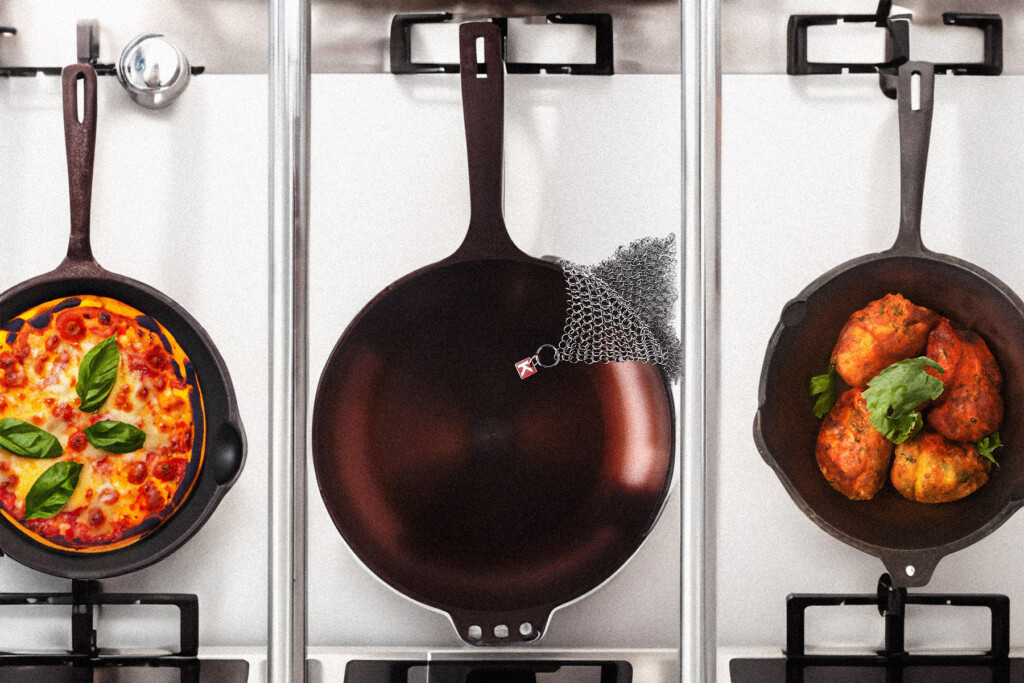Most folks are confused as to what a cast-iron skillet can do. Former owner of Ettiene Market (now The Standard) Coryanne Ettiene attributes that to, in part, the years-long market domination of Lodge skillets—which, while fine in quality, are coated and therefore lack some of the benefits of naked cast-iron. Ettiene breaks it down: “Anything that is coated will immediately block the nutritional elements of cooking on iron and prevent your pan from ever being non-stick.” It also means cooking anything acidic is a no-go, as they strip a coated pan of its seasoning.
On the contrary, you can prepare your favorite marinara sauce in a traditional skillet with minimal impact. “Anything that plays well with fire will ignite with flavor when cooked on traditional cast iron,” says Ettiene. In addition to naturally increasing the iron content in your food, cast-iron produces beautiful searing and charring. Still intimidated? Read on.
How to Care for It
First you need to know what type of cast iron you’re dealing with. Is it black and bumpy to the touch? This means it’s coated, in which case Ettiene says to use soft, damp cloths or a salt scrub to clean it—as well as soft utensils while cooking—to prevent scratching the coating. (Like Teflon, it’s toxic when scored.) Dry, lightly oil, and warm in the oven to zap any residual moisture. Store in a pillowcase to prevent dust and scratches.
For traditional uncoated cast-iron, Ettiene recommends scrubbing with soap and water like normal—“the more you clean the surface of your cast-iron, the smoother and more non-stick it will be”—then pat it dry and lightly oil before storing.
As for what oil to season with? Ettiene suggests cold-pressed pecan oil (which has one of the highest cooking tolerances), grapeseed oil, or peanut oil (though the latter will impart a nutty flavor). “Cooking on cast-iron requires high heat,” she says, “so you need an oil to keep up.”

What to Cook in It
- The Obvious
- The Not-So Obvious
- Steaks
- Hash
- Pancakes
- Cornbread
- Pan Pizza
- Oven-Dried Tomatoes
- Clafoutis or Dutch Baby
- Braised Broccoli
- Omelettes
- Toasted Granola
- Blueberry Crumble
Author







